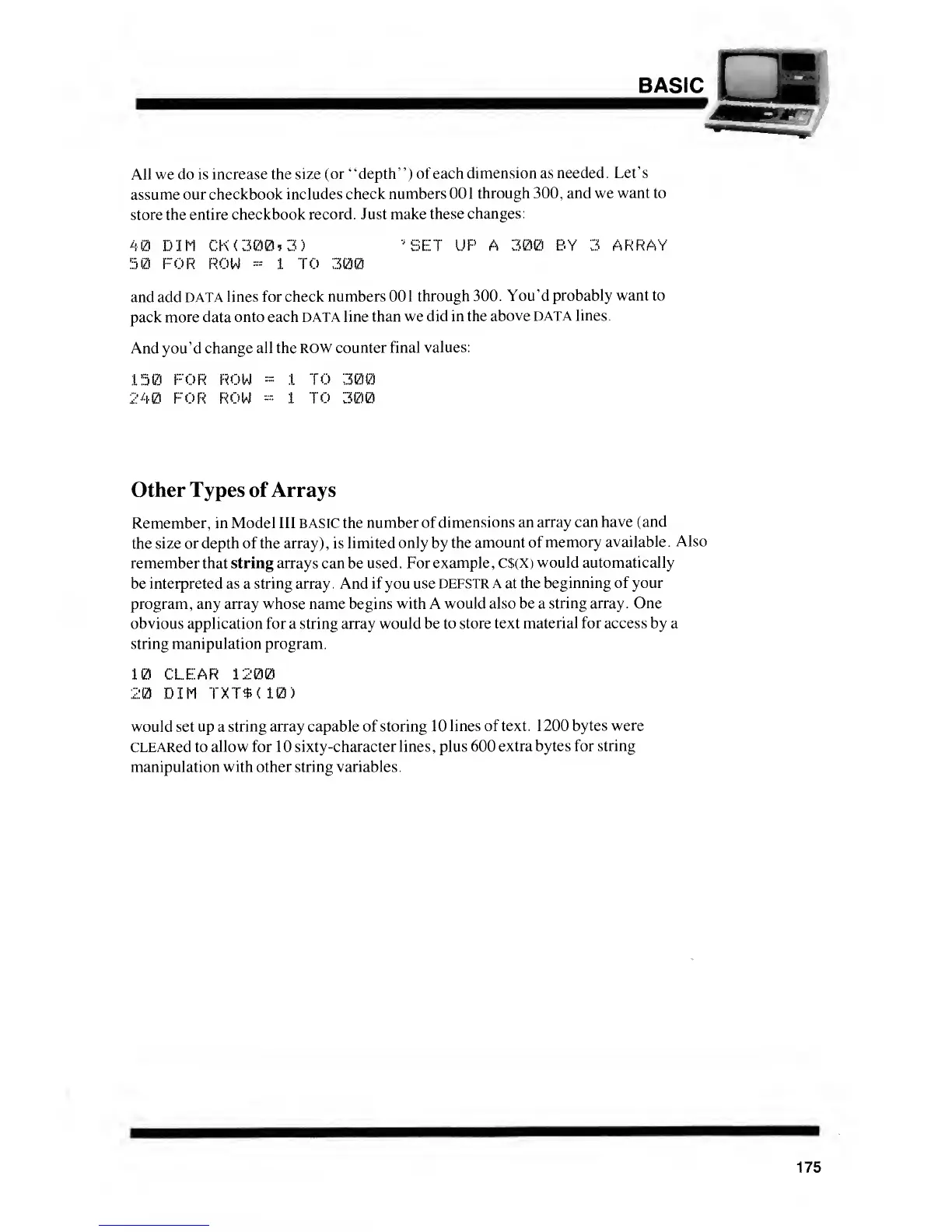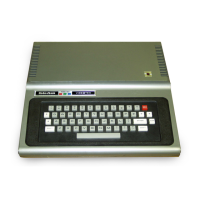BASIC
All we do is increase the size
(or
"
depth
'
'
) of each
dimension as
needed
.
Let
'
s
assume our checkbook
includes check
numbers 00 1
through
300,
and we want to
store the entire checkbook
record. Just make
these
changes:
40 DIM CK(300»3>
'SET UP A 300 BY 3
ARRAY
50 FOR ROW
=
1 TO
300
and add DATA
lines for check
numbers 00 1
through
300
.
You
'
d
probably want to
pack
more data onto each DATA
line than
we did in the
above DATA
lines.
And you'd
change all the
ROW counter final
values:
150
FOR ROW
=
1
TO 300
240 FOR ROW
=
1
TO 300
Other Types of Arrays
Remember, in Model III BASIC the
number of
dimensions an
array can
have (and
the size
or depth of the array)
,
is limited
only
by
the
amount of
memory
available
.
Also
remember that
string
arrays can
be
used. For
example,
CS(X)
would
automatically
be interpreted as a
string
array. And
if
you
use DEFSTR A at
the beginning of your
program, any array whose name begins
with
A
would also be a
string array. One
obvious application for a string array would be
to store text
material for
access by a
string manipulation program.
10 CLEAR
1200
20 DIM TXT*(
10)
would
set
up
a
string array capable of storing 10
lines of text. 1200
bytes were
CLEARed to
allow for
10
sixty-character lines, plus 600
extra bytes for
string
manipulation
with other string variables.
175

